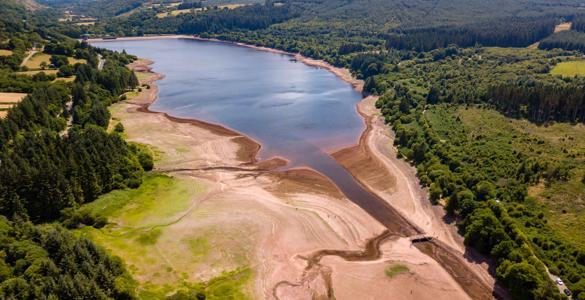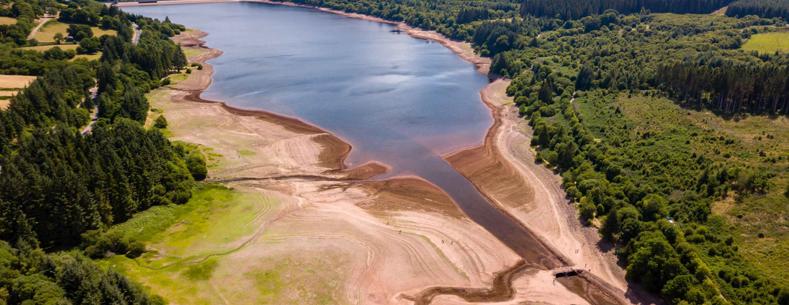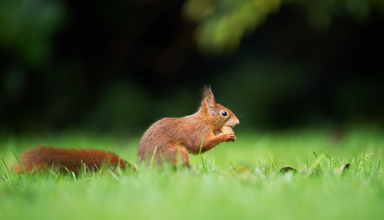Wales has been in drought since the beginning of September, and despite recent rainfall, remains in drought.
Drought can be a devastating natural disaster, threatening lives and livelihoods. It builds up over time, and can last weeks or even years.
The concept of drought is well recognised; there’ll be dried-up reservoirs and parched fields, and it often goes hand-in-hand with a heatwave. Generally speaking, there’s a lack of water.
However there’s no one definition of exactly what a drought is. Every drought is different and each can have a different effect on people, businesses and the environment.
More than a dry spell
The Intergovernmental Panel on Climate Change identifies four common types of drought, summarised by the Met Office as:
- Meteorological drought – when rainfall in an area is below average for the region;
- Agricultural drought – when lack of rainfall or dry soil affects farming and crop growth;
- Ecological drought – like agricultural drought, but when lack of water affects the local environment as well; and
- Hydrological drought – when water supplies such as streams and reservoirs are low, which can be caused by low rainfall, lack of snow melt, or other reasons.
With the exception of meteorological drought, which is focused on the cause, drought is otherwise defined by who or what it’s impacting.
As is often the case, the current drought in Wales is a combination of the above. The decision to declare a drought is made by a group of experts; the Wales Drought Liaison Group, who consider the latest hydrological and environmental data, and any impacts from prolonged dry weather on the natural environment and people.
Wales received just 56.7% of its expected rainfall between March and August, the third driest six-month period since records began. In August alone, Wales only received 38% of the average monthly rainfall. This was exasperated by the eighth warmest summer in Wales since 1884.
Natural Resources Wales (NRW) says this prolonged dry and hot period has led to exceptionally low river flows, groundwater levels and reduced reservoir levels. This has exacerbated pressures on land, habitats, wildlife and water supplies.
Come rain, come shine
NRW is responsible for ensuring proper use of water, and making sure there’s enough water for all needs, including those of the environment.
Alongside ongoing monitoring and regulation of water resources, NRW is required to have a drought plan which sets out indicators used to classify the different stages of drought. It’s used by the Wales Drought Liaison Group and other NRW teams as an ‘operational manual’ when rainfall levels begin to fall, covering key decisions, actions to take, and how to manage impacts during a drought.
Water companies are also required to plan for drought. In their drought plan, they need to show how they will supply water to customers when water supplies become depleted, and how they will minimise the adverse effects of a drought.
If there’s been an exceptional shortage of rain, water companies can apply to NRW for drought permits or orders, which allow them to amend their abstractions to help maintain public water supplies or protect the environment.
In exceptional circumstances, NRW can also apply to the Welsh Government for a drought order if the environment is suffering serious damage as the result of abstraction during a drought.
How does this affect me?
For most, drought is synonymous with a ‘hosepipe ban’, officially called a ‘temporary use ban’. The decision to apply a ban to an area is taken by the local water company, to ensure continuity of water supply for customers and to protect the local environment. But despite Wales being in drought, only Pembrokeshire is under a ban right now.
Drought can have far reaching effects on a number of sectors. Economic impacts result from transport networks having to shut down, interruption to supply chains and delays to construction projects.
Impacts from drought are felt heavily in the agricultural sector, including crop failure, reduced yields and increased soil degradation. Livestock can suffer from heat stress, which can impact fertility and mortality rates.
This in turn impacts food security. The UK has recently seen autumns too wet to sow many overwintering crops, coupled with more extensive summer droughts which constrain the growing seasons.
The UK Food Security Report found wheat yields had dropped by 40% in 2020 due to heavy rainfall and droughts. It also found that significant future risks to UK food production include heat stress to livestock and drought.
Fish out of water
Drought can cause habitat loss, migration of local species, the spread of invasive species and consequently biodiversity loss.
The most immediate and visible impact from prolonged dry weather is low river flows, and subsequent stress to fish populations. Migratory fish such as salmon and sea trout face increasing challenges travelling upstream to spawn. Increased temperatures in rivers and lakes can lead to oxygen depletion and a rapid increase in the amount of algae, putting fish at risk of death.
Insects are also extremely sensitive to weather conditions, with water a crucial resource for them. Alongside the possibility of overheating, studies show certain plant species produce less nectar sugar under drought conditions. This in turn impacts pollination, a key ecosystem function.
Adapting to a changing climate
The Met Office says there’s increasing evidence that climate change is influencing rainfall patterns around the world. The latest Intergovernmental Panel on Climate Change Sixth Assessment Report tells us that heatwaves have become more frequent and more intense across most land regions since the 1950s.
Drier summers on average have been projected, alongside an indication the drying trend is stronger with higher greenhouse gas emissions. These conditions can increase the frequency of large-scale natural events such as wildfires.
Academics argue that the way to stop extreme weather events becoming more frequent is to cut carbon dioxide emissions and reach Net Zero. An expert from Cambridge University says “we can adapt to a hotter, drier climate. We can adapt to a wetter climate. It is hard to adapt to both”.
Article by Lorna Scurlock, Senedd Research, Welsh Parliament






